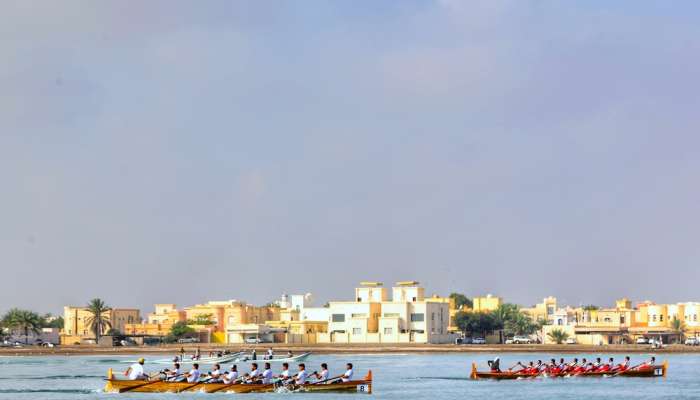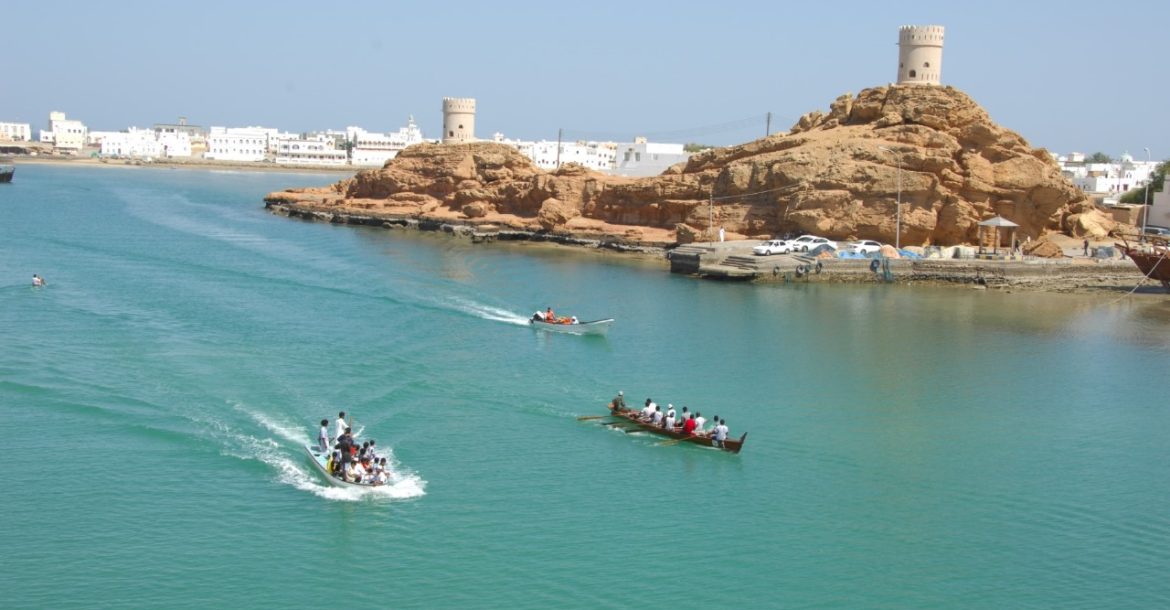Oman’s connection to the sea runs deep. With a coastline stretching more than 3,000 kilometers along the Arabian Sea and the Gulf of Oman, the ocean has always been part of its identity.
For centuries, Omanis have relied on the sea for trade, fishing, and exploration. Yet the sea has also given them a culture rich in traditions, songs, and sports. Among these, traditional boat racing and nautical games stand out as a living heritage.
These events are not just about speed. They are about pride, teamwork, and honoring the skills that once made Oman a maritime powerhouse. Today, as modern life moves forward, the echo of paddles and the sight of white sails remind Omanis of their roots.
The Historical Roots of Omani Boat Racing
Long before sports were formalized, Oman’s seafarers were already testing their skills on the water. Dhows, the famous wooden sailing vessels, carried traders from Oman to East Africa, India, and beyond.
Over time, sailing became more than a livelihood. Communities began to celebrate craftsmanship and skill by holding informal races. Villages competed to see who could build the fastest vessel or who had the strongest crew.
These early competitions laid the foundation for what is now one of the most beloved traditions in Oman—traditional boat racing.
The Spirit of Traditional Dhow Races
Dhow races are among the most iconic events in Oman. These boats are handmade, crafted with precision, and often passed down through generations.
During races, they are fitted with large triangular sails. When the wind catches them, the dhows surge across the water with breathtaking speed.
The beauty of the race lies not only in the boats but in the teamwork. Fishermen, sailors, and young enthusiasts row or steer in perfect rhythm, guided by trust and years of practice.
Watching a fleet of dhows glide side by side is like watching poetry in motion. The horizon fills with sails, and the shore erupts with cheers.

Rowing Competitions: Strength and Rhythm
Alongside sailing, rowing races are another highlight. These events demand raw strength, but also discipline.
Rowers sit close together, gripping their oars tightly. Every stroke must be in sync, or the boat loses balance. The rhythm is almost musical, like a heartbeat shared between the crew and the sea.
Rowing competitions are a way for young Omanis to prove themselves. They also allow elders to pass down the values of endurance and teamwork. For the spectators, the excitement builds with every stroke until the finish line is reached.
Nautical Sports in Modern Oman
While traditional events still thrive, Oman has also welcomed modern nautical sports. With steady winds and clear waters, it has become a hub for sailing, kitesurfing, diving, and windsurfing.
Tourists from around the world visit Oman’s coasts for these adventures. Yet the charm lies in how Oman blends the modern with the traditional.
On one beach, you might see sleek yachts and surfers. On another, you might hear the chants of rowers and see dhows racing in unison. This balance keeps Oman unique in the nautical world.
Festivals and Celebrations of the Sea
Boat racing is often tied to national celebrations or community festivals. When a race is announced, it becomes more than a sporting event.
Families gather on the shore with food and music. Elders share stories of voyages. Children run around, their eyes fixed on the boats.
The atmosphere feels like a carnival. The race itself is thrilling, but the sense of unity and pride lingers even after the boats return to shore.
The Craftsmanship Behind the Boats
The boats used in traditional races are not built overnight. They are the product of patient, skilled craftsmanship.
Omani shipbuilders, often called ustads, use time-tested techniques to shape the hull and set the sails. Every curve and joint is measured with care.
For them, a boat is not just a tool. It is a piece of heritage. When these boats enter the water, they carry the soul of the craftsman who built them.
By continuing the races, Oman ensures that this ancient art of boatbuilding never disappears.

Women and Nautical Heritage
Although the spotlight has long been on men in nautical sports, women have always been part of the maritime story.
They supported voyages, managed communities during long trips, and preserved traditions through songs and poetry.
Today, women are also active participants. Many have taken up modern sports like sailing, diving, and kayaking. Their growing involvement shows how Oman respects its traditions while embracing progress.
Tourism and International Appeal
Traditional races have also become a major attraction for visitors. Tourists are fascinated by the sight of dozens of dhows lined up at the starting point.
International sailing competitions are now held in Oman as well, drawing athletes from around the world. These events put Oman on the global sporting map while giving tourists a taste of authentic culture.
For locals, the presence of international visitors adds pride. Sharing their traditions with the world strengthens their bond with the sea even more.
The Symbolism of the Sea
For Omanis, the sea is more than water. It is a symbol of resilience, courage, and freedom.
Boat racing reflects this symbolism. Just like life, the race depends on winds that may change at any moment. Success requires skill, patience, and unity.
For the younger generation, these sports are a reminder of identity. In a fast-changing world, they teach values that are timeless.
Challenges in Preserving Tradition
Like all traditions, boat racing faces challenges. Modern entertainment often competes for the attention of youth.
Commercial ships and speedboats dominate the waters, leaving less space for traditional practices. Some fear the younger generation may lose interest.
Yet, with schools and cultural programs promoting heritage, the tradition remains alive. Competitions are supported by local communities and national organizations, giving them a stronger foundation.
The Future of Nautical Sports in Oman
Looking ahead, Oman’s nautical traditions are likely to thrive. Government support, tourism interest, and community pride are keeping them strong.
The challenge lies in striking a balance. Oman must preserve authenticity while allowing traditions to evolve with time.
What remains certain is the spirit of unity. Whether it is fishermen rowing together or modern sailors competing in international waters, the sea continues to unite people.
Conclusion
Traditional boat racing and nautical sports in Oman are more than games. They are expressions of history, pride, and community.
Every sail that catches the wind and every oar that touches the water tells a story. It is the story of ancestors who braved the seas, of craftsmen who shaped wood into art, and of families who continue to celebrate their bond with the ocean.
In today’s modern world, these traditions stand as a reminder: progress should never mean forgetting where we came from. Oman’s boat races show that heritage and modernity can sail side by side, creating a legacy that inspires both locals and visitors alike.
Do follow Gulf Magazine on Instagram.
Also Read – Rugby Development Programs in Oman: Building Future Champions



